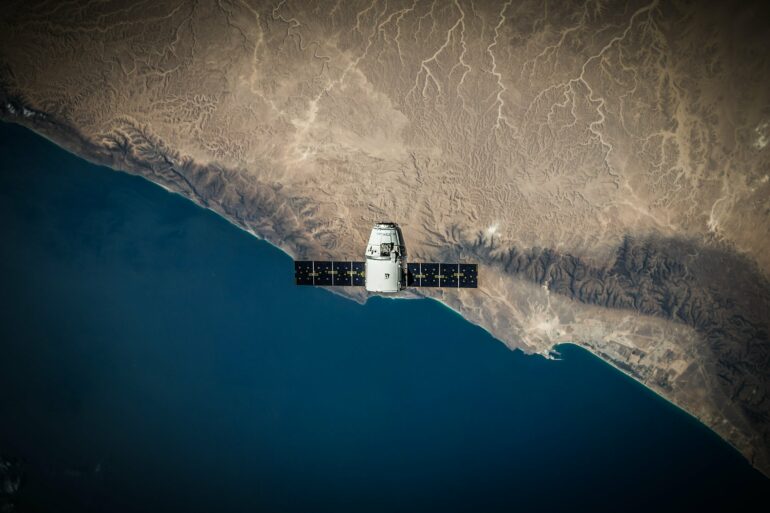The joint research team of Electrical Engineering and Computer Science Professor JeongHo Kwak at the DGIST and Aerospace Engineering Professor Jihwan Choi at the KAIST have proposed a novel network slicing planning and handover technique applicable to next-generation low-Earth orbit (LEO) satellite network systems. Findings of the study have been published in the journal IEEE Vehicular Technology Magazine.
LEO satellite networks refer to communications networks with satellites launched within 300–1,500km, established for a stable supply of Internet services. Unlike base stations on land in which radio signals are often interfered with by mountains or buildings, LEO satellites can be launched to build communications networks to places with low population density where base stations could not be set up, thereby allowing them to receive the spotlight as a next-generation satellite communications system.
Accordingly, as more and more satellites are placed in lower orbits, satellite networks are expected to be formed as an alternative to terrestrial networks using links between LEO satellites. However, LEO satellites move in predictable orbits, and their connection within the network is wireless, which is why LEO satellite networks must be considered from a different view than terrestrial networks.
To meet the increasing needs for data and diversified service demands such as VR/AR and autonomous driving in the 6G era, it is necessary to adopt “network slicing” technology that flexibly provides services according to the user’s needs after separating into independent virtual networks instead of providing a single core network infrastructure at high speed.
The “planning phase” of network slicing is when a connection is secured during the slicing service period in the network slicing technology that must maintain a peer-to-peer (P2P) connection. Because the satellites are revolving around the Earth at high speed, it is necessary to define the planning phase of satellite network slicing by considering the handover of the satellite when applying to satellite networks.
Kwak’s and Choi’s teams propose a novel network slicing planning technique using the characteristics of LEO satellite distribution and movement as well as the wireless channel environment in scenarios where various services are virtualized.
The slicing planning technique including handover in LEO satellites developed in this study has significance in taking South Korea’s satellite network technology to a new level, which is still at an initial stage compared to other countries, where LEO satellite Internet services such as Starlink are being commercialized.
“This study is to continuously provide the network slicing service the users want in line with the changing LEO satellite environment,” said Electrical Engineering and Computer Science Professor JeongHo Kwak at the DGIST. “Our goal is to provide a blueprint for the use of various killer applications in LEO satellites for the coming 6G era.”
More information:
Taeyeoun Kim et al, Satellite Network Slice Planning: Architecture, Performance Analysis, and Open Issues, IEEE Vehicular Technology Magazine (2023). DOI: 10.1109/MVT.2023.3238515
Provided by
DGIST (Daegu Gyeongbuk Institute of Science and Technology)
Citation:
Researchers develop network slicing technique for low-Earth orbit satellite communications (2023, July 6)



